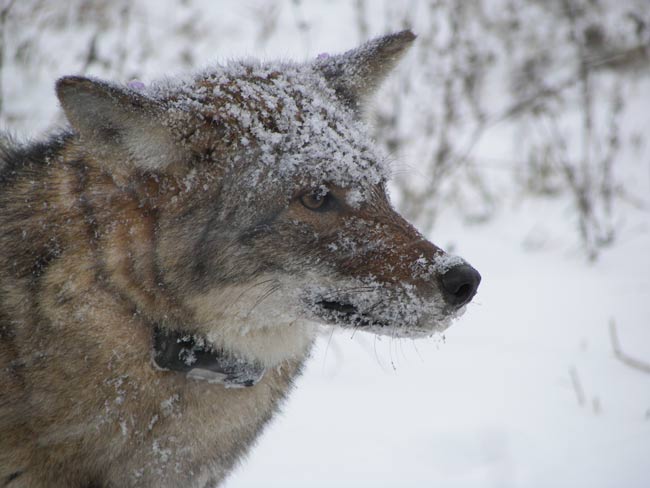Coyotes Thrive in Eastern U.S.

Coyotes are one of nature’s most adaptive species, able to thrive in different settings and survive on many diets. In the past 15 years, coyote populations have exploded in the northeastern United States as a result of humans eliminating native wolves from the region.
Scientists now are studying coyotes, opportunistic omnivores, to unravel mysteries such as why the average body size of a northeastern coyote is larger than their brethren elsewhere. Researchers also want to understand what effect these new top predators are having on the local ecosystem, specifically deer, one of their favorite meals.
Jacqueline Frair, a wildlife ecologist at the SUNY College of Environmental Science and Forestry in Syracuse, N.Y., attaches GPS tracking collars to coyotes so she and her research team can see where they go, what they eat and how many of them are in the neighborhood.
"We really don’t have a good estimate of the status of the population, if it's growing or if it's stabilized," Frair told LiveScience. "If we can nail down how many coyotes we have, we can study predator-prey dynamics."
Frair's research, funded by the New York State Department of Environmental Conservation, aims to provide a better picture of how the arrival of coyotes affects the food chain.
Coyotes sharply reduce the number of local red foxes, which are their closest competition, and in so doing affect many other species, she said. For example, since raccoons compete with foxes, raccoon populations may grow, and since foxes threaten songbirds, their numbers may also swell.
"There can be quite a shakeup in the system," Frair said.
Sign up for the Live Science daily newsletter now
Get the world’s most fascinating discoveries delivered straight to your inbox.
Coyotes can occasionally pose a risk to humans and are attracted to people's homes when food is left out for pets or trash is easily accessible.
The predators are native to the western United States around Montana and Wyoming, but now thrive throughout North America. Coyotes were first officially sighted in New York in 1925, and scientists estimate there are now thousands in the state.
- Video: Coyotes Thrive in Northeast
- Top Predators Key to Ecosystem Survival, Study Shows
- The Biggest Carnivore










